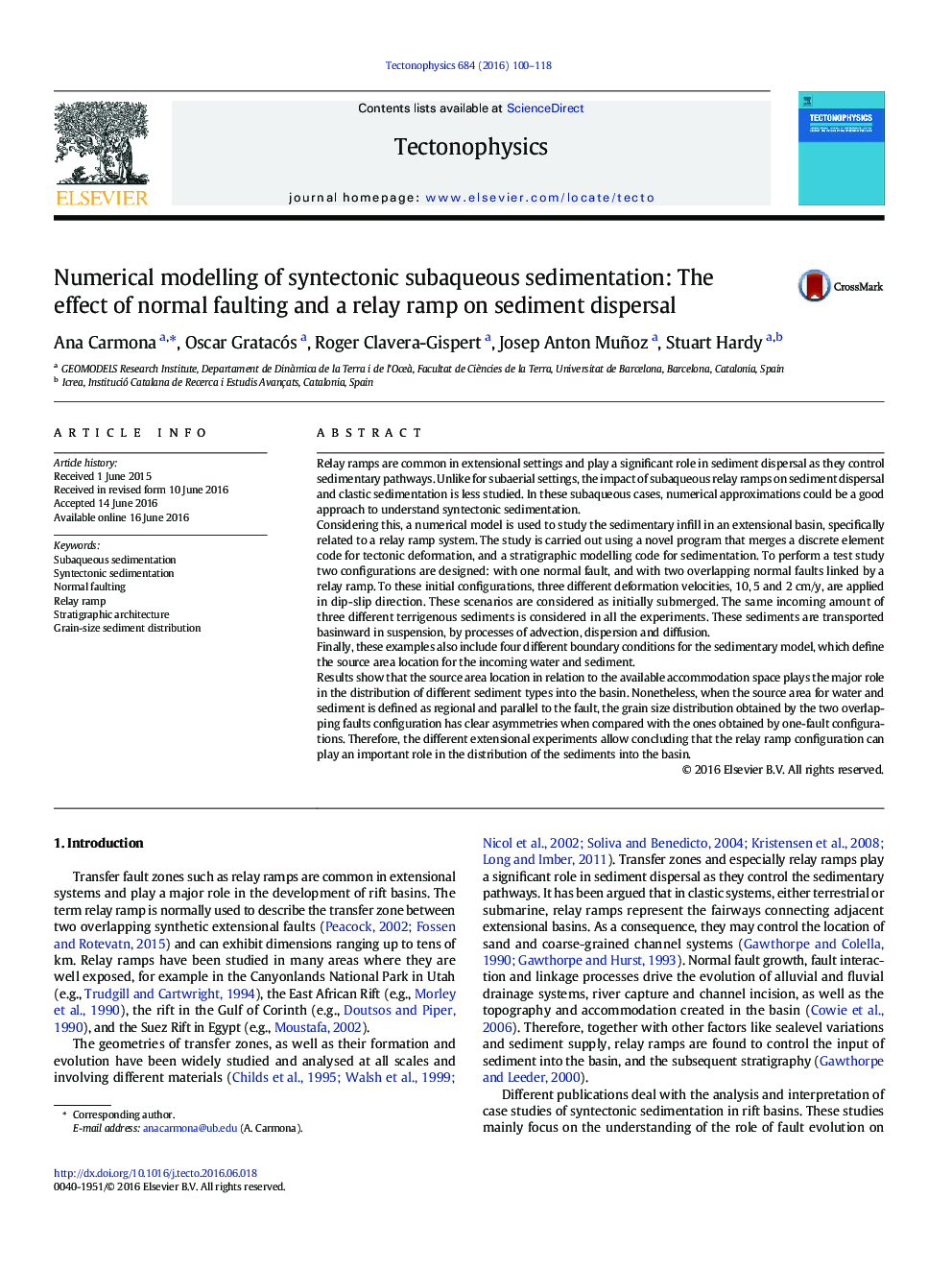| کد مقاله | کد نشریه | سال انتشار | مقاله انگلیسی | نسخه تمام متن |
|---|---|---|---|---|
| 4691243 | 1636714 | 2016 | 19 صفحه PDF | دانلود رایگان |
• Numerical model to analyse sedimentation patterns and grain-size distribution in subaqueous extensional settings
• Dominant sediment trends show clear differences in function of the deformation velocity.
• One-fault configurations show the same dominant sediment type trend independently of fault position.
• The deposition of different grain-size sediments is conditioned by the relay ramp position.
• Sediment trends mainly conditioned by source location in relation to accommodation space
Relay ramps are common in extensional settings and play a significant role in sediment dispersal as they control sedimentary pathways. Unlike for subaerial settings, the impact of subaqueous relay ramps on sediment dispersal and clastic sedimentation is less studied. In these subaqueous cases, numerical approximations could be a good approach to understand syntectonic sedimentation.Considering this, a numerical model is used to study the sedimentary infill in an extensional basin, specifically related to a relay ramp system. The study is carried out using a novel program that merges a discrete element code for tectonic deformation, and a stratigraphic modelling code for sedimentation. To perform a test study two configurations are designed: with one normal fault, and with two overlapping normal faults linked by a relay ramp. To these initial configurations, three different deformation velocities, 10, 5 and 2 cm/y, are applied in dip-slip direction. These scenarios are considered as initially submerged. The same incoming amount of three different terrigenous sediments is considered in all the experiments. These sediments are transported basinward in suspension, by processes of advection, dispersion and diffusion.Finally, these examples also include four different boundary conditions for the sedimentary model, which define the source area location for the incoming water and sediment.Results show that the source area location in relation to the available accommodation space plays the major role in the distribution of different sediment types into the basin. Nonetheless, when the source area for water and sediment is defined as regional and parallel to the fault, the grain size distribution obtained by the two overlapping faults configuration has clear asymmetries when compared with the ones obtained by one-fault configurations. Therefore, the different extensional experiments allow concluding that the relay ramp configuration can play an important role in the distribution of the sediments into the basin.
Journal: Tectonophysics - Volume 684, 2 August 2016, Pages 100–118
